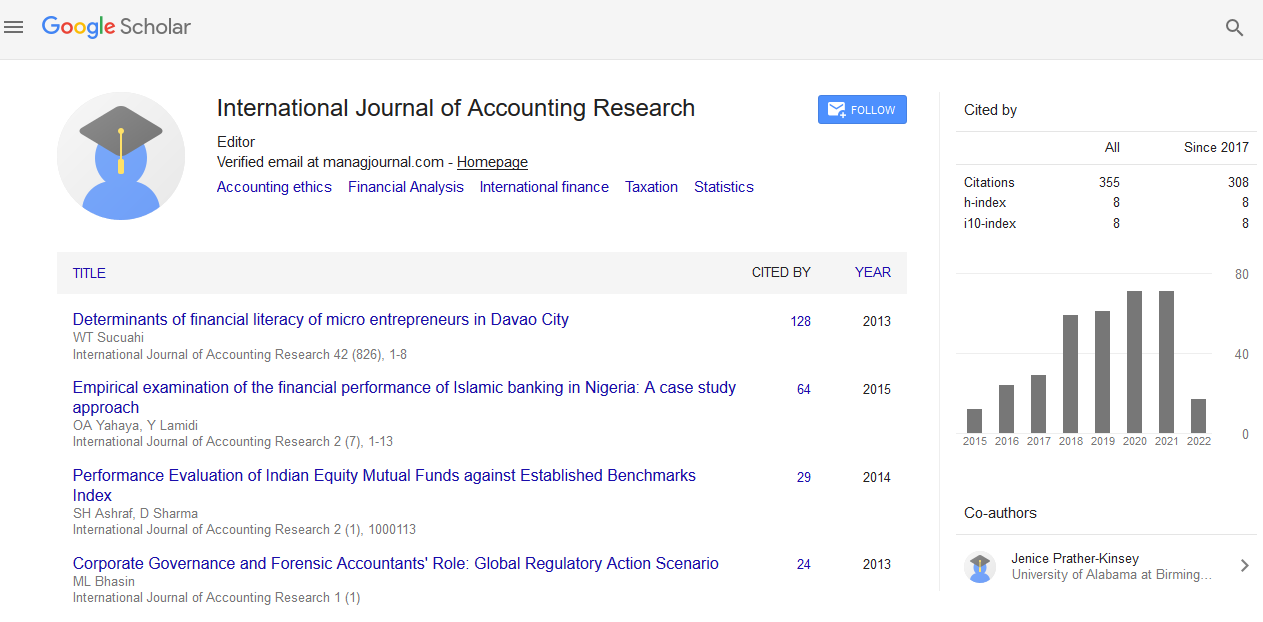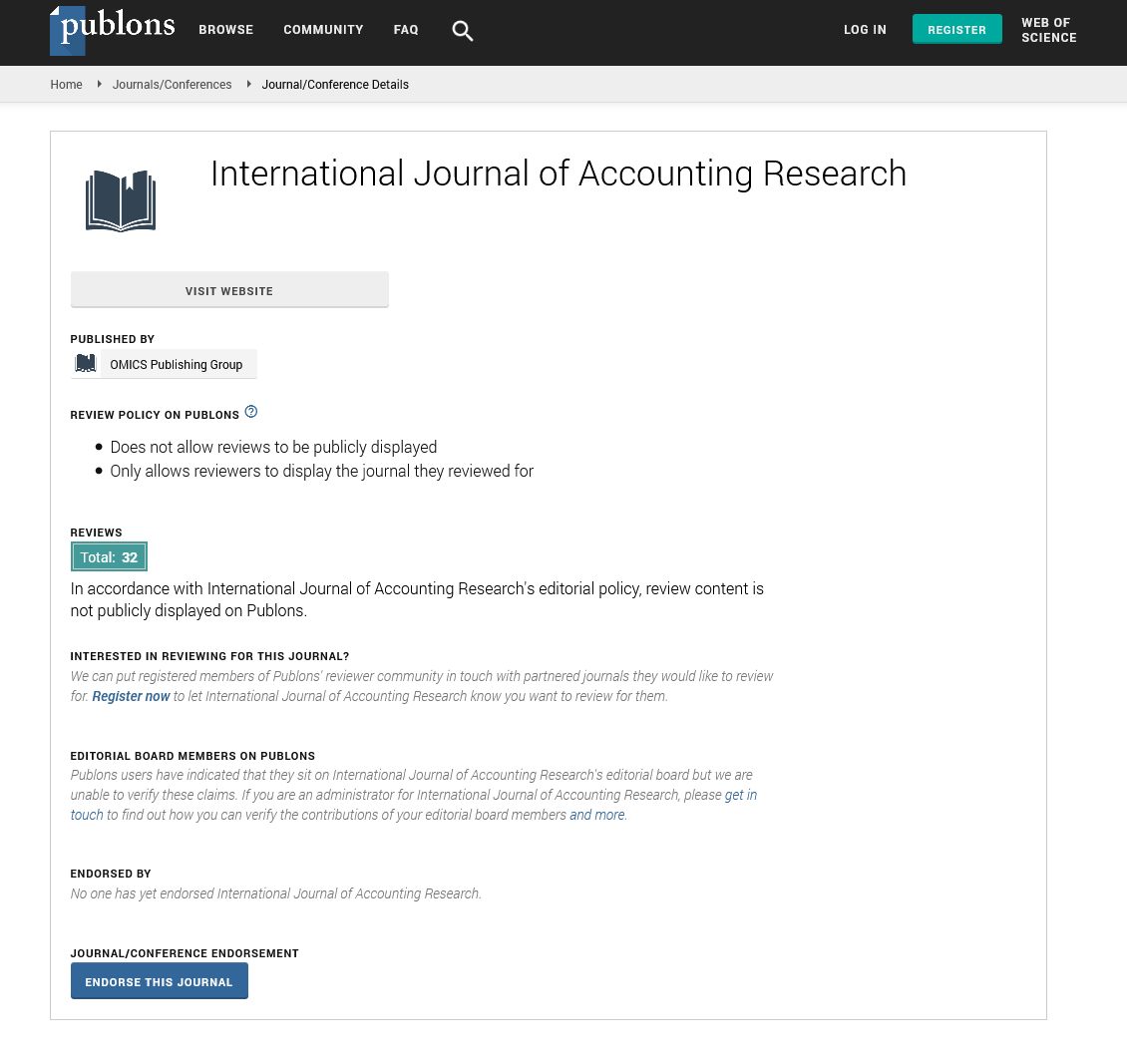Indexed In
- Open J Gate
- RefSeek
- Hamdard University
- EBSCO A-Z
- Scholarsteer
- Publons
- Euro Pub
- Google Scholar
Useful Links
Share This Page
Journal Flyer

Open Access Journals
- Agri and Aquaculture
- Biochemistry
- Bioinformatics & Systems Biology
- Business & Management
- Chemistry
- Clinical Sciences
- Engineering
- Food & Nutrition
- General Science
- Genetics & Molecular Biology
- Immunology & Microbiology
- Medical Sciences
- Neuroscience & Psychology
- Nursing & Health Care
- Pharmaceutical Sciences
Commentary - (2023) Volume 11, Issue 6
Understanding the Impact of Banking Stress Assessments
Yang Yei*Received: 27-Nov-2023, Manuscript No. IJAR-23-24149; Editor assigned: 29-Nov-2023, Pre QC No. IJAR-23-24149 (PQ); Reviewed: 14-Dec-2023, QC No. IJAR-23-24149; Revised: 20-Dec-2023, Manuscript No. IJAR-23-24149 (R); Published: 28-Dec-2023, DOI: 10.35248/2472-114X.23.11.360
Description
The effects of the release and disclosure of the clarification, methodology, and results of the United States banking stress tests on bank equity prices, credit risk, systematic risk. Show evidence that stress tests influenced stock and credit markets after the results were revealed. Furthermore, nearly all years following the publishing of stress test findings, banks' systemic risk, as assessed by betas, dropped. Their data imply that stress tests have an effect on systemic risk.
Stress testing has grown in importance as a tool for bank regulators. Stress tests analyze the consequences for individual banks' financial standing under various macroeconomic scenarios, taking into account the banks' exposures and business strategies. Stress tests may have an impact on bank behavior. Stress tests result in reduced capital and risk-weighted asset ratios for banks. However, there is little indication that stress-tested banks change the makeup of their loan portfolios or reduce their interbank borrowing and lending in reaction to stress-testing outcomes.
They discover that stressed banks cut dividends at a far higher rate than non-stressed banks. Finally, participating banks spend much more money on lobbying. They find that stress tests have helped to mitigate the procyclicality of bank capital and have improved risk management and capital planning at institutions that have completed them. In addition, when compared to nontested banks, tested banks raised lending spreads and decreased credit availability, particularly for riskier loans.
Stress testing have numerous aspects. They are, first and foremost, forward-thinking. Second, they generally place a high emphasis on severely bad scenarios, providing information about potential hazards to supervisors. Third, banks are subjected to common scenarios to verify that supervisory rules are enforced consistently across the board. Finally, unlike typical regulatory investigations, bank stress test results are frequently made public in order to restore confidence and decrease market uncertainty. Stress testing done in the United States are commonly thought to have benefitted the market. As a result of post-crisis stress assessments. Even when there is no crisis, sharing stress test findings and assessments provides market participants and the broader public with important information, improves transparency, and encourages market discipline.
Stress tests, on the other hand, reveal unique knowledge to outsiders, and such disclosure may have endogenous costs. For example, disclosure could jeopardize the operation of the interbank market and the risk-sharing services it provides. It may also encourage banks to engage in suboptimal behavior, since they will have an incentive to pass the tests rather than take safe risks. Other negative effects of disclosure on market operations include panic among bank creditors and other bank counterparties, as well as a decrease in market information gathering and processing.
The Comprehensive Capital Analysis and Review (CCAR), which has been undertaken yearly since 2011, examines banks' capital planning processes and capital adequacy. The CCAR incorporates quantitative stress test results as well as qualitative assessments of banks' capital planning processes. The Dodd- Frank Act mandates the second program, which involves examining how bank capital levels will fair in difficult conditions. The first Dodd-Frank Act Stress Test (DFAST) results were made public on March 7, 2013. Analytically distinguishes between the DFAST and CCAR exercises because the underlying assumptions of the tests differ and, as a result, market participants' weighting of their outcomes may differ.
Citation: Yei Y (2023) Understanding the Impact of Banking Stress Assessments. Int J Account Res. 11:360.
Copyright: © 2023 Yei Y. This is an open-access article distributed under the terms of the Creative Commons Attribution License, which permits unrestricted use, distribution, and reproduction in any medium, provided the original author and source are credited.


